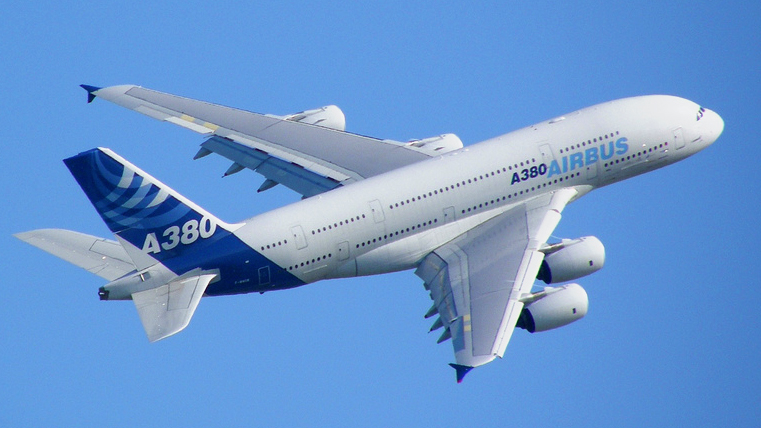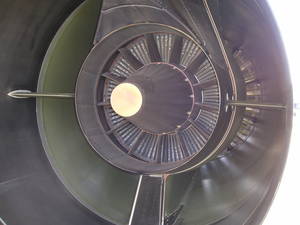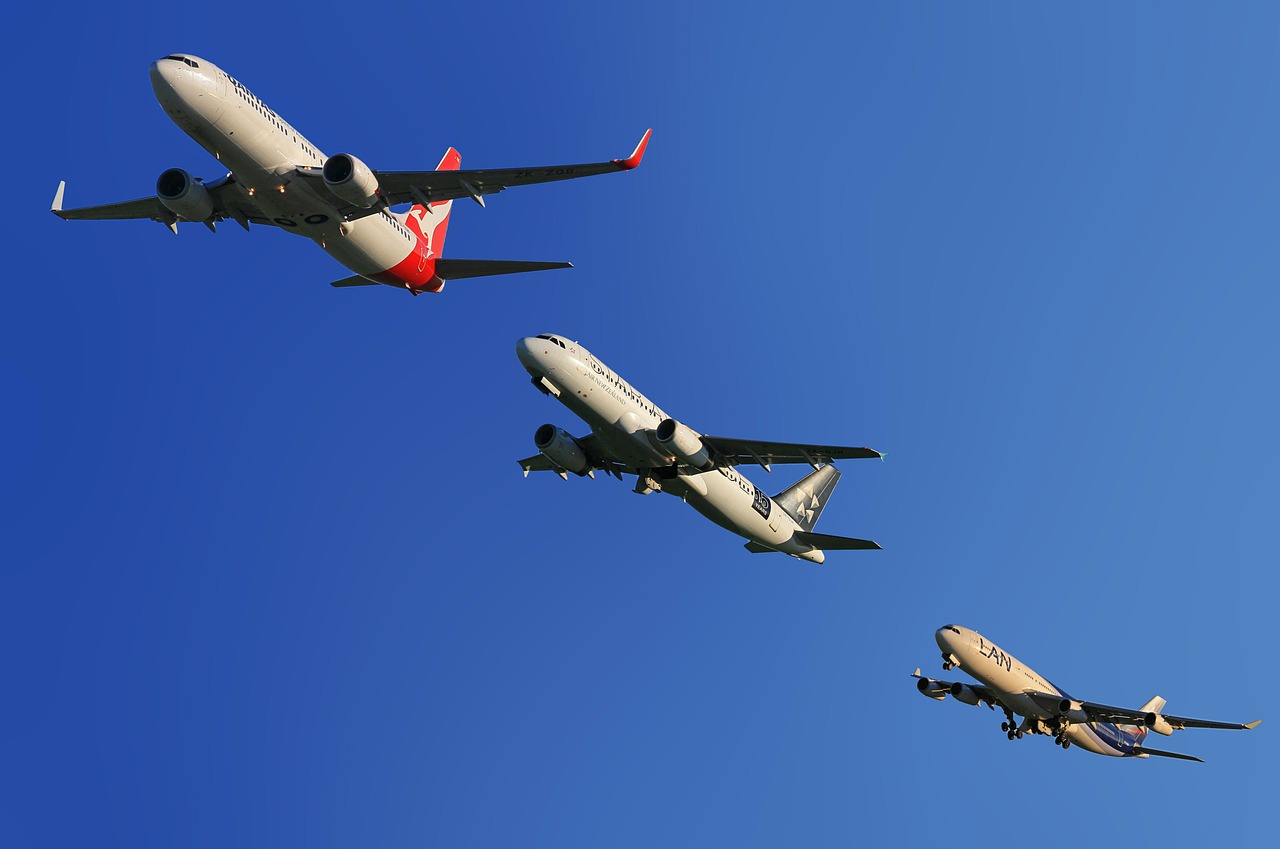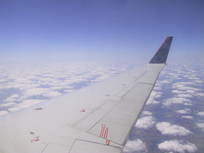There are over half a million people travelling in the air at any one time. This leads to a whopping 10,000 litres of jet fuel burnt every second, accounting for 2% of global CO2 emissions. But how are humans able to conquer the skies? It's all down to a remarkable feat of engineering: the jet engine. But what is a jet engine, and how does a jet engine work?
Jet engines are used to generate thrust. They do this using nothing more complex than Newton's laws of motion: every action must have an equal and opposite reaction. This means that when air is pushed out of one end of the jet engine, the jet engine is pushed equally in the opposite direction. This is thrust.
 |  |
|---|
Every time we fly we are using a jet engine, and this is probably their most well-known application, however they are exploited in all walks of life. Jet engines are used in cruise missiles, fireworks, spaceflight and the high speed cars used to beat the land speed record. They are also needed in industrial gas turbines, and marine power plants, where they generate electricity. What's more, they power water, natural gas and oil pumps, and they provide the driving force for ships.
How does a jet engine work?
As mentioned above, jet engines operate on the simple principle of Newton's third law - for every action, there is an equal and opposite reaction. In a jet engine, this simply means that as air is thrown out of the back of the engine, the engine, and the aeroplane it is attached to, is pushed forwards in the opposite direction. This force is equal and opposite, so a very large volume of air must be pushed out very fast, in order to provide enough forward force, or thrust, to move a whole aeroplane.
There are four processes which happen in the jet engine, which enable huge, heavy aeroplanes to fly; suck, squeeze, bang and blow.
Firstly, air is sucked into the engine via the large fan blades on the front of the engine. These are what you can see when you look at a plane, as you board for your holiday. This air is then squeezed to one twentieth of its original volume in the compressor. At the start of this stage, the air is still cold, but after compression its temperature rises to over 600 degrees C. Thirdly, fuel is injected into the compressed air, and burnt, causing the temperature to sky rocket to 1800 degrees. During the final stage, this hot, compressed air is passed through the turbines, while it expands and cools. These turbines use this energy to drive the plane. They are also connected to a central rotating rod passing through the whole engine, so as they turn, they draw more air into the engine. In this way, the internal energy of the fuel is converted to kinetic energy of the plane.
There are many types of jet engine, and the above describes a turbojet. Other engines have additional features. For example, a turbofan is the same as a turbojet engine but with the addition of a fan, which is also powered by the turbines. The fan is used to enable some of the air flow to bypass the engine core, and simply pass straight out of the back end of the engine. This air has not gone through the hot core of the engine, so is travelling slower than the air that has. However, a much larger volume (or mass) or air can be passed through in this way, resulting in a more efficient thrust than that produced via the core of the engine. Turbofan engines are therefore often more efficient than turbojets at subsonic speeds, but the fan itself produces more drag due to its increased size.
What are jet engines made out of?
The temperatures inside the combustor section of a jet engine reach 1800oC. It is hard to imagine how hot this is, but it is actually above the melting temperature of the materials used for the engine. So the half a million people that are in the air as you read this article are hanging up there by metals that should be molten!
Before you decide never to fly again, be reassured by the ingenious engineering that goes into making the jet engines.
The underlying materials used in the hottest, most extreme parts of the engine are nickel-based superalloys. These are alloys - a mixture of different metallic (and non-metallic) elements - that are designed to withstand these conditions.
Nickel-based superalloys are, unsurprisingly, made up mainly of nickel, but they also contain upwards of ten other elements too. These elements are chosen to give the best properties. For example, chromium is added to reduce oxidation - that well known phenomenon that causes your old car to rust.
These elements also result in a particular structure, which is what gives these superalloys their unmatched properties. This structure is made up of two phases, or forms. One phase (the matrix, also called 'gamma' phase) is a face-centred cubic structure - imagine a cube, with an atom at each corner and in the middle of each face. The second phase is called gamma prime. This phase is different, in that its atoms are ordered. The structure is the same as the matrix, with atoms on the corners and faces of a cube, however in the gamma prime phase, specific atoms are found in specific places. For example, if nickel atoms are found on the corners of the cube, aluminium atoms are found on the cube faces. This is why it is described as 'ordered'.
These second phase particles appear as cuboidal-shaped particles, or precipitates, that can make up as much as 70% of the overall structure. Imagine a waffle - with the indents being the precipitates, and the ridges the main matrix phase - and you can picture what the microstructure of a nickel-based superalloy looks like.
It is these precipitates which give the 'super' in 'superalloy'. They strengthen the material in a variety of ways, which are often hotly debated in the literature. One such way in which they increase the strength of the material, is in the strain set up at the interface between the matrix and precipitate phases. The atoms in each phase have a set distance between them - the atomic spacing. The atomic spacing of the matrix phase is different to that of the precipitate phase, and this results in atomic bonds being stretched across the interface. This is one method by which they cause strengthening.
Unlike most materials, where heating causes the material to become weaker, superalloys have a remarkable property that their strength actually increases with temperature, up to around 800oC. This is certainly an attractive property for jet engines, and again, is due to these precipitates.
The turbine blades in a jet engine rotate at over 10,000 times per minute. This exerts a huge force on each blade - equivalent to 15 hatchback cars hanging off each one. At take-off, the tips of the turbine blades are travelling at more than one and a half times the speed of sound! That's a lot of force on a bit of metal which can be only a few centimetres in size.
This force acts along the length of each turbine blade - seeking to elongate the blades in this direction. This deformation is called creep, and it happens slowly over time. This is a major problem for materials in applications where you have a large force being applied over a long time, like the jet engine. The requirements for the jet engine are so stringent that the turbine blades must not elongate by more than a few millimetres, otherwise they would touch the outer casing, and cause catastrophic failure.
To protect against creep, the turbine blades are each carefully produced as a single crystal, much like a single crystal of salt or a snowflake. In a single crystal, the atoms are all lined up perfectly. This means there are no weak boundaries between neighbouring crystals, and this helps protect against creep.
The temperature in the combustor reaches up to 1800oC, far exceeding the melting temperature of the metals used to make the components. It is only due to clever engineering that we don't fall out of the sky as our plane engine melts. Two different methods are used to protect the metal components.
Firstly, a ceramic coating (often yttria stabilised zirconia, or YSZ) is applied to the surface which has a higher melting point than the metal alloys. This protects the underlying metal from melting. These 'thermal barrier coatings' are made up of many layers to ensure a good bond with the underlying metal - so the coating doesn't simply peel off - and to offer sufficient protection.
Secondly, small channels are made within the blades themselves, through which 'cool' air (still around 600 degrees) from other parts of the engine is circulated, thereby cooling the turbines.
What is the future of jet engines?
One of the most important requirements for a jet engine is its efficiency. This is important for the environment, but also for economic cost. Efficiency can be increased in two main ways - through the turbines, or by thermodynamics.
 |  |
|---|
Turbine efficiency is how well the turbines extract the energy from the hot, compressed gas passing through them. This is increased by using lightweight materials for the fan blades, as this means less energy is wasted in simply rotating those blades. Thermodynamic efficiency is how much of the energy from burning the gas we can later extract back through the turbines. We can increase this by burning the fuel at a higher temperature, and for this we require materials which can withstand this scorching heat.
We have reached the limit with the current materials. To enable faster, cheaper and more environmentally friendly air travel, we need new materials which can withstand the extreme conditions in the jet engine. Alloys based on titanium are currently being researched with the aim of replacing nickel. There is also a large trend towards non-metallic components, such as composites. Perhaps the shape of the plane itself will be changed, to minimise drag or decrease weight. Or perhaps there will be changes in the engine itself. In any case, this is a research area of huge importance right now, and a step change is needed to ensure the future of air travel.









Comments
Add a comment